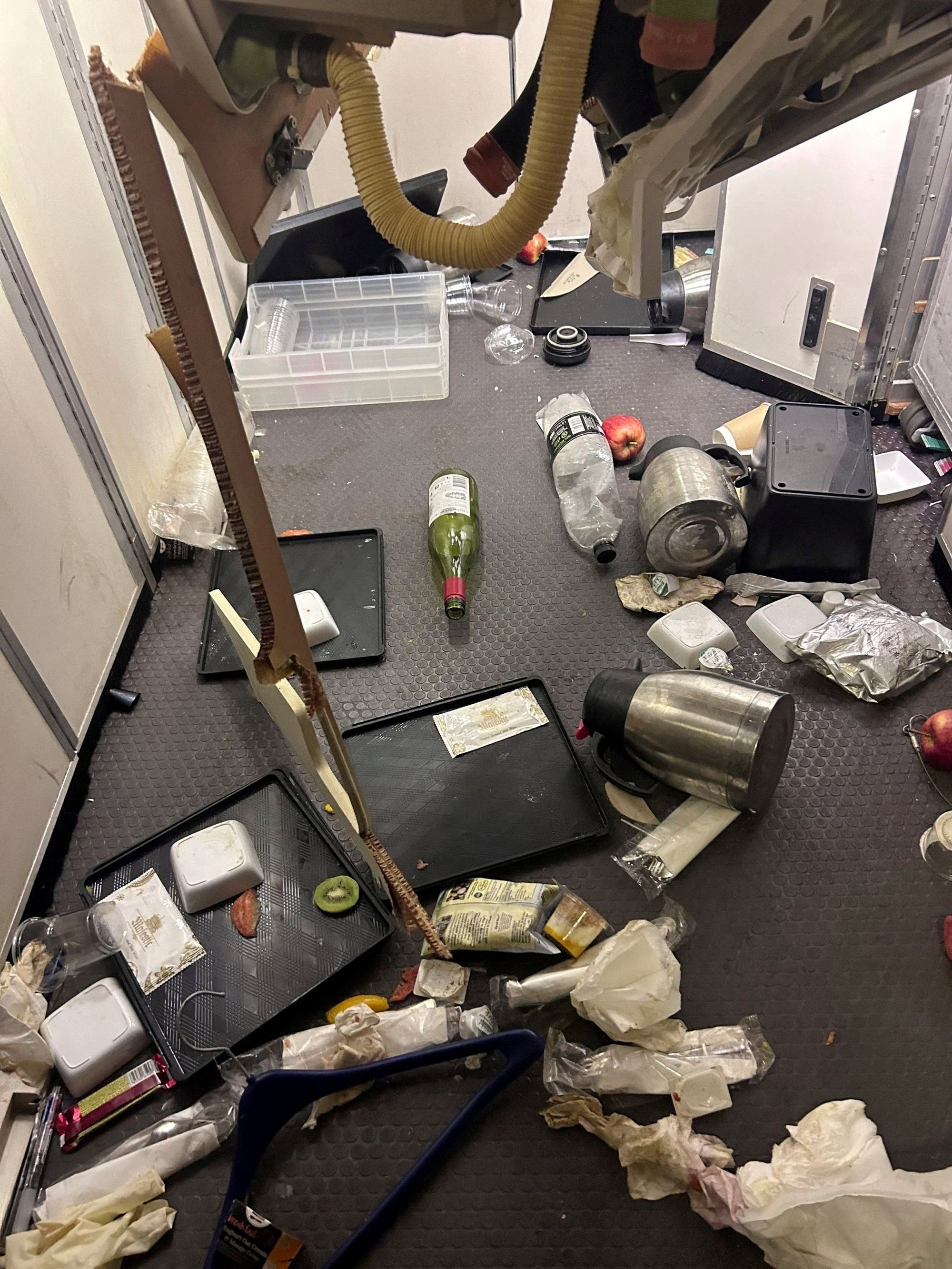
Singapore Airlines turbulence: stopping meal service may not reduce risk to passengers, Hong Kong’s Cathay Pacific union says
- Paul Weatherilt, chairman of Hong Kong Aircrew Officers Association, says stopping all airline meal service when seat belt sign turned on may not be most effective way to tackle turbulence risk
- Singapore Airlines has revised its rules for cabin service following fatality aboard flight that ran into severe turbulence this week
Paul Weatherilt, chairman of the Hong Kong Aircrew Officers Association, told the Post on Saturday tightening cabin service rules could bring about undesirable results and the best way to prevent injuries during flights was to require passengers to keep their seat belts fastened at all times.
“I’m not convinced that stopping the [meal] service will necessarily change anything, and I think it is possible that it could have a counterproductive effect,” he said.
Weatherilt said Singapore Airlines’ rule revisions could make cabin crew hesitant to put the seat belt sign on, while meal service might not be halted quickly enough as it took time to retrieve the food carts.
“Obviously service is important in an airline so it might actually have a counterintuitive effect … It will have a big impact on the service inside the cabin,” he said.
On Tuesday, Singapore Airlines flight 321 from London to the city state carrying 211 passengers and 18 crew members encountered severe turbulence, leading to the death of a 73-year-old British man and injuring at least 40 others.
In response, the airline announced on Thursday that in-flight meal service would be halted when the seat belt sign was switched on, and hot beverages would not be served. Crew members must also return to their seats and fasten their seat belts.
Passengers have told media outlets that the turbulence hit almost immediately after the seat belt light came on, and those who were not buckled in were thrown into the air, hitting the ceiling before being slammed back down. Breakfast was being served at the time.

Weatherilt noted Cathay currently required hot drink service to be halted when the seat belt sign was switched on, but meal service could continue.
The cabin crew would decide to suspend the rest of the service if turbulence worsened, he added.
Weatherilt suggested requiring passengers to stay buckled up at all times while seated during flights.
He also said cabin crew should be empowered to decide for themselves whether they should also return to their seats and fasten their seat belts during turbulence.
In a reply to the Post’s inquiries, Greater Bay Airlines said on Saturday that the airline would maintain its current in-flight service practices and ensure its operations complied with the relevant statutory requirements.
Cathay declined to comment to the Post’s inquiries about whether the airline would make changes to its cabin rules, while the Post has also contacted Hong Kong Airlines for comment.
Additional reporting by Ambrose Li

